Editor's Note: Lucy Rose's previous album, Something's Changing, was originally released in 2017. Today, Rose releases Something's Changing (Remixes)—in which 12 producers take the British folk artist's spare guitar-, piano-, and vocal-driven songs into new sonic realms. Below, Lucy Rose introduces the project and explains why she approached these artists to reimagine her work. Then, each producer walks us through their process.
Since my first single I've always had remixes made for my songs. It's something that fascinates me—hearing how another musician can interpret the song and make a whole new world that my lyrics and melodies can live in. You can send the same song to five people and get five completely different songs back.
My music definitely lives in a certain world, but that doesn't mean I don't enjoy other genres. The last remixes I had done were for a track called "Nebraska," and I distinctly remember hearing one of those remixes after I show I played in Hong Kong in the tallest bar in the world. I was already so excited because of where I was and then to hear a remix of my song playing in the bar was completely surreal.
As I write my songs alone, sometimes making music can feel pretty lonely and solitary, but making these remixes has been so much fun, collaborating with artists that I truly love and respect. Over the last few months I've been receiving emails and different versions of the mixes and it's been an interesting project that's kept me company whilst I've been touring. The songs became the soundtrack to a lot of the long drives we had across North America and Europe.
I'm very excited that today all the remixes are available for people to hear, and, on top of that, we have an insight into what gear they used to make them. Everyone seems to attack making a remix in a different way, using different gear, so I thought for those out there interested in the behind-the-remix gear, I'd put together a bit from each remixer on how they made theirs.
I chopped up the vocals and harp and put it into the EXS24 sampler—which is the default sampler on Logic Pro X—making up the bare bones of the track. Most of the sounds were made in the EXS24 sampler from various guitar phrases and vocal layering that I've previously recorded. The drum sound I made from loads of different sample packs that I also put into the EXS24.
I tread carefully with the logic midi instruments because they can be super cheesy and plastic at times, but if you compress/EQ/reverberate the sounds in a certain way it becomes a lot more "humanised" and you can get away with it. It takes a fair bit of trial and error to hear what works and what doesn't.
My favourite plugins are the Molot compressor and Limiter №6 from vladge/sound (they are free). The Molot is my go-to compressor. Its super powerful and versatile. Valhalla Room Reverb is my favourite reverb. It's warm and pretty organic in the mix.
I also use Vulf compressor by GoodHertz—it's a bit of a wild effect. It makes everything sound a bit old, crushed, and warped, but you can really get inventive with it. Sometimes when I play around with the Vulf compression on the master channel it can reveal details in the mix that you couldn't hear before (good or bad). LoHi is an EQ plugin with a built in limiter on it. It's also made by Goodhertz and it really can really beef up a sound.
I've been using Logic Pro X as my DAW for a long time and I like everything about it—I think it's simple and powerful, and over time I've gained a good workflow on it. I don't see myself ever using anything else.
I used Logic X for everything I think, apart from the drum sounds and the bassline, which were stems from Lucy. The bass sound is just a preset in one of the Logic synths, the drums are a mix of ones already in Logic and free samples I've picked up over the years. I like to use a thing called varispeed—it's built-in in Logic X. It basically just slows the track down and affects the pitch.
I also use a lot of reverb. My favourite is the TrueVerb by Waves and a little trick using the built-in Sample Delay in Logic and turning it up to just under 1000 can make whatever you're using it on sound stereo and a lot wider.
I use Pro Tools, and when I got Lucy's session files I basically went through and set it to a click track using a SoundShifter plugin and worked out which parts of the vocal could be timed up without it sounding too altered or robotic.
For me, it's always best to just lift out a single element and to start from there. With Lucy's track it was the strings and the bassline which I replayed on a massive soft synth. I try not to have too many soft synths at my disposal, but mostly use Native Instruments stuff. For the beat I've played in a Korg Volca beat part and looped it, then added some additional live percussion.
The Organ sound is played on an FM8 soft synth. I put Lucy's vocal through a Morphoder Vocoder, which is a Waves plugin, and played around with the chords in MIDI. For the "All the time" section, I went though and pitch-shifted two duplicates of Lucy's main vocal to compose a three-part harmony. I try and be really relaxed with remix composition, and just let it flow instinctively for me in terms of where the peaks and lows are. I also use a lot of Soundtoys stuff and some Waves plugins too.
Technologically, this is a bog standard, in-the-box remix—working in Live—and the outcome is a result of trial and error and old habits. I started by subverting the chords around the very lovely vocal melody which I'd quantised as well as tuned heavily and built the music around these elements. You can hear a Mellotron in the mix here, which despite being the only out-of-the-box element, is, for all intents and purposes, still a digital instrument. But they've managed to retain (most of) the richness of the old models.
I use Ableton [Live]. I recorded all the sounds myself. I like to do lots of different sessions and then pull them into tracks as I need them—it becomes like a sample pack I've made for myself.
My favourite part about this track was the piano sound. I've been getting into prepared piano. That rustling sound is from a piece of paper up against the strings. The synth bass part is from my Prophet-8. It's the only piece of analog gear I own. Other than that there is really no special plugins or tricks. Using all my own sounds is definitely my preferred method and it's something that I think more producers should do.
We used Logic Pro X and manipulated the samples Lucy gave us, along with drum samples that come with the software. The majority of the sounds were a combination of our own field recordings and improvised instrumental recordings, pitch-shifted and re-keyed on a sampler to merge with [Lucy's] stuff.
We don't really have a favourite plugin, as every one seems to serve as a function in the whole process, and in this case the process was gut-driven and experimental. We also like to create our own percussive samplers out of glitches and more abrasive sounds, which are often created via manipulating originally organic snaps, claps, or hits.
I built the main chords around a flute note sample, which I stacked up on to different notes to make the chords, then I glued another higher flute around the hook to give it more movement, and a few vocal ooos I had from somewhere (no idea)... Then side-chained them to shit!
The bell/music box thing was originally a few loops from a sample pack, but I chopped and Melodyned the notes and rhythm and came to that, which I thought worked nicely. I think I probably ran it through my Roland Space Echo as well (extra slice of niceness). Some of the drums were just from Lucy's original stems—I always struggle with drums for some reason—dropped in a kick and snare sample.
I made it all in Logic, but I don't really use any of the plugins/sounds in Logic. They are pretty naff, bar the EQ/compressor. I guess my favourite plugin for this one was Melodyne. I also love the Soundtoys Decapitator and Ampex Tape Saturator. Lucy's vocal was perfect, so I literally put some reverb on it I think!
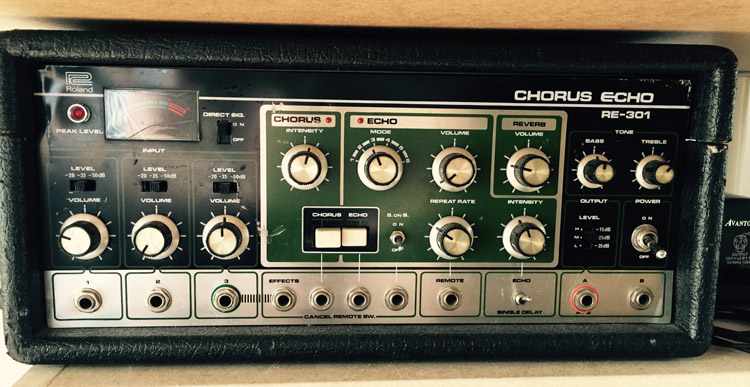
It was such a pleasure piecing this remix together, mainly because Lucy's voice on this song was a dream to work with. I worked on the vocal in Logic but recorded mostly into Pro Tools, sometimes via a tape machine for the real bits, piano, and percussion (sticks, lap slaps, knuckles on my table top).
For synths I used my Korg Poly-800 and the CS-80 plugin from Arturia toward the end of the track. I sampled my 1930s pump organ—the breath as you play the pedals is really loud, which you can EQ out a little, but it's a soft texture I always want in the mix. The kick and snares are from a Roland 606 drum machine. For the mix I sent almost everything through my suitcase Neve—it's such a beast! The spread on this desk is huge and the EQs sound awesome. As for outboard gear, I compressed Lucy's vocals a little extra through an LA-2A and sent the piano through Pultec EQs.
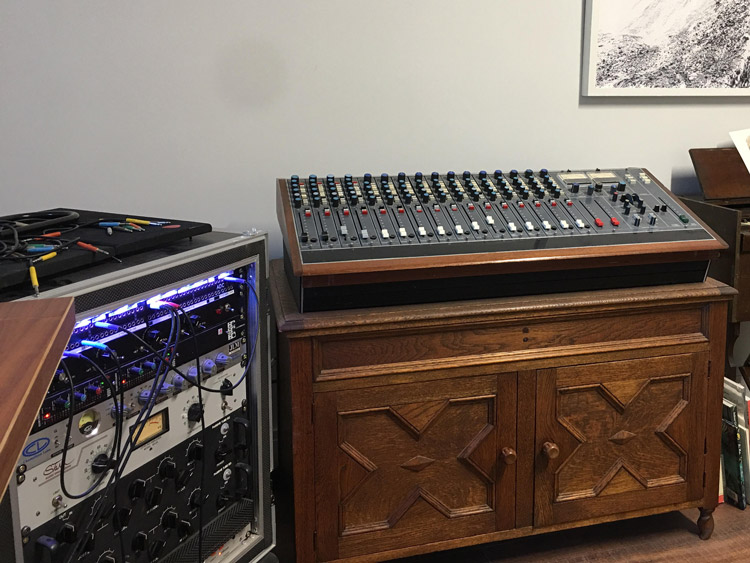
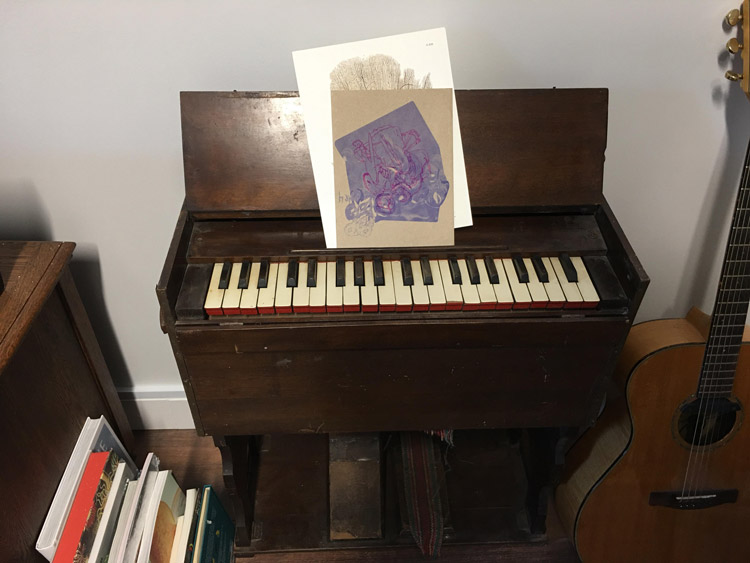
I really love this track on the record—both the space and the lateness of the 3/4 swing. When approaching the remix I had an idea in mind, but it meant switching the track from 3/4 to 4/4. At first I tried doing this to a click but found it lost a lot of the feel, so it meant building the break and then editing the vocal to the break before adding the rest of the instruments.
I always find it best to edit with my ears and not my eyes—and this was a great example of this. The feel of the vocals in the track work nicely around 4/4 when pushing and pulling a few elements, but when trying to edit to a grid it sounded disjointed.
The break was built using a combination of samples I've made over the years (mostly workshopping hits in album sessions). I keep a few folders on Stylus RMX, which allow me to cycle through some options quickly to build the bones of a loop. I layered this with elements of Jungle Warfare breaks I had recycled and "bit-crushing" a live shaker with a bit of reverb and burying it underneath to give it some cohesion.
Once the break was set and the vocal was edited to it, it was very clear that the instruments needed to be played in as opposed to played and then drawn/edited. I'm not the best keyboard player, so thankfully Lydia Kitto came in to play the Rhodes-type sound, which came from a Nord Stage played directly into a WEM tape echo, with minimal echo. I find the WEM works really well for giving tracks a bit of crunch and saturation without too much distortion, and this sat nicely in the mix.
I sat a copy of the lead vocal, pitched an octave down underneath Lucy's lead. This was spread using a Cooper Time Cube and kept a little wet, whilst being compressed hard in parallel with the lead vocal. I find this helps to give a low-mid warmth to the vocal without changing the tone too much. It also allowed for a sine sub from the Moog to sit tightly in the verses to give it a bit of depth but not sound too clubby.
The strings were from the [GForce] M-Tron Pro, which I still believe to be the best/most fun replication of the Mellotron on the market. I would absolutely love a real Mellotron, but this is a good substitute both in regards to portability, maintenance, and cost.
It was a lot of fun to work on this track, because so much of it was about feel. Sometimes, I find remixes sound a little cut and pasty, and this wasn't really an option here. To be faithful to the original, whilst creating shape, meant the human feel of the keys, Mellotron, and bass needed to sit nicely alongside the vocal.
The final touch was to add a few harmonies, some from Lydia and some pitched from myself to slightly change the feel of the choruses to sit alongside the jazzier chords from the Rhodes.
I use hardware synths and effects as much as possible for my remixes—they tend to have more character and I find it's easier to commit to decisions if things aren't so infinitely tweakable. My favourites include the Sequential Pro One and its much younger bigger brother the Prophet-08. I also have a mad MIDI-controlled walkman called a Crudman that I like to squeeze on to as many of my tracks as possible because it's so weird and wonderful. However, almost all of the sounds on this remix come from my modular synthesizer. It's a largely homemade Eurorack system—a lot of the modules were built from kits bought from the DIY synth shop Thonk.
Some of the core modules used on this track were the Intellijel Rubicon, an expanded Music Thing Turing Machine and Radio Music. Modular nerds can see my current rig here.
Pretty much all the sounds on this track are from there, except for some drums from the MFB 522 Drum Computer and some pads made using vocal samples on Logic's built-in EXS24 sampler synth. And there's a lot of harp courtesy of Emma Gatrill. Her harp is an Eos by Teiffi in Wales. I use some weird effects on many of my remixes—the Ekdahl Moisturizer for spring reverb, filtering, and drive, Cooper FX Generation Loss to add beautiful random pitch fluctuations, the MWFX Judder for total chaos, and my old Roland RE-201 for real tape echo.
Some of the plugins used include Valhalla DSP—they make really exceptional and very reasonably priced reverbs and delays—Soundtoys, who make great saturation plugins and lots of fun creative weird stuff and Cableguys Pancake which is a panning plugin useful for adding stereo variation to mono sources—it's great and free.
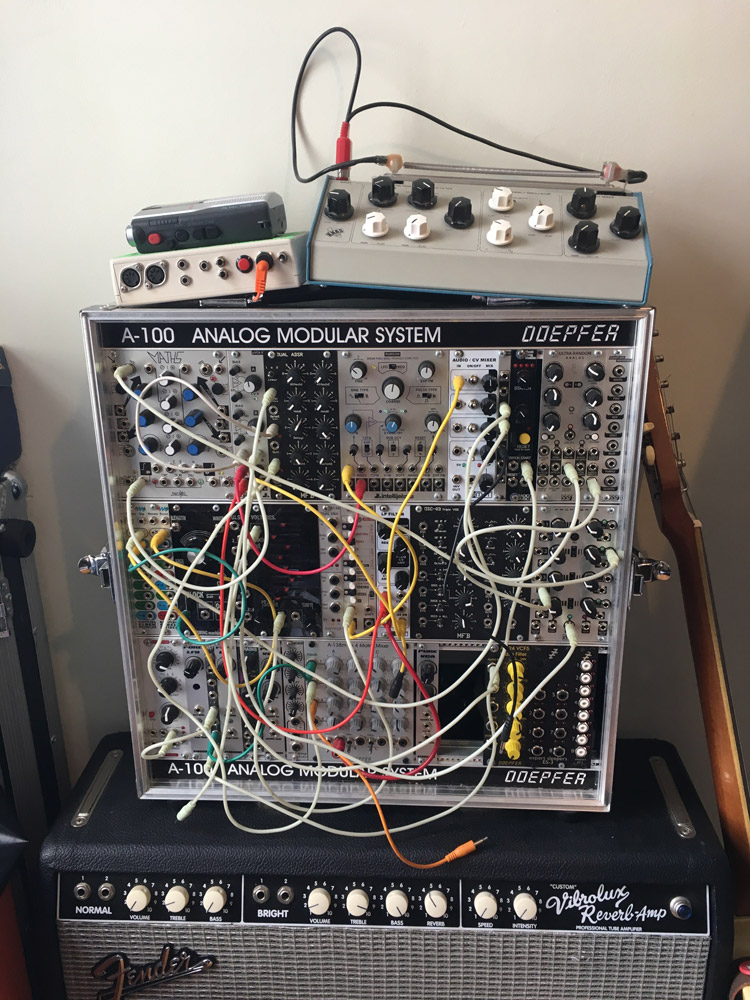
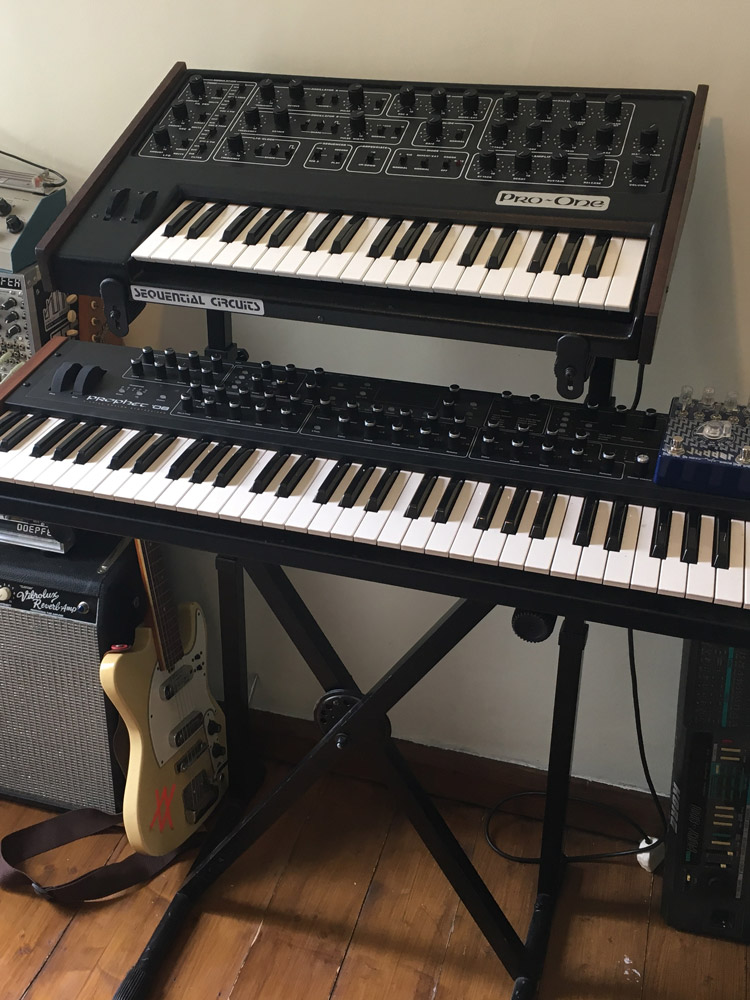
I really enjoyed working on this remix and knew I could do a lot with the original song. First, I started with an acapella of the vocals, and sped them up and added a modulation effect to Lucy's voice to make a notable difference from the original.
I recorded a new progression that would sound a little more soulful but would still work with the stems. I then made the drum pattern in my Maschine and exported that into the project. It's a four-to-the-floor kind of beat, but I put a little swing on it to give a bit more of a bounce/groove. The bassline was done in a software called Albino, and I played it as though it was a real bass, giving it that live feel.
Finally, I incorporated a sample from 2nd Direction's "Flying Carpet Ride" just to add some flavour and atmosphere to the chord progressions. I pitched the sample and cut it to then accompany the progression of the keys and synth.
When Lucy asked me to remix one of her songs from her latest album, "No Good At All" was a standout track to me, as I really love the chilled-out disco vibe that she created in the different instrumentation and back-beat feel. I felt the chorus was a strong place to start, so I dragged the vocal stems (these are the only original stems I used) into Logic X and looped it around whilst playing along on a Yamaha CP-70 until I was happy with the new tempo (104 bpm) and chord progressions I wanted to use. On the CP-70 I used a Wave plugin called Kramer Tape and found a balance between the Flux and Flutter to create a more vintage sound.
My main aim for this remix was to have a healthy balance between live instrumentation, synths, and beats whilst focusing on that disco appeal. To start creating the right feel I then chopped up some drum samples I've collected and recorded over the years and mixed them with samples I downloaded from Splice. I like to try and find the weirdest and most unexpected sounds to mix with my beats.
Once I had arranged the track the next step was to add in the live instrumentation. To list some of the other instruments I used: Fender P-Bass, Nord Stage 3 (upright piano settings), Fender Strat, and a violin made by Paul Bailly. I used a Universal Audio Apollo Twin II as an audio interface to record everything, using mainly the Neve 1073 Legacy as a plugin in the console. For the BVs and strings I used Sontronics ARIA valve/tube cardioid condenser microphone along with Wave plugins (CLA-3A, H-Delay, EQ) and Valhalla Reverb.
To mix in with this instrumentation I used synths from Arturia—mainly the Prophet-V, Jup-8, Oberheim SEM V, and the Mini V for the gritty synth bass sounds. For Lucy's vocals I had to go in and individually flex the sound waves to make sure it sat in the pocket in the faster tempo—I didn't want to do anything too drastic to her main vocals sound-wise because I still wanted it to fit into that more organic bracket.
At the middle eight and outro section I created a separate channel using Logic's EXS24 to chop up the vocals and mess around with the pitch, trying to take inspiration from Justin Vernon on his vocal production. For the string arrangement, I wanted it to be something that ventured into a more alternate chord progression and take the listeners somewhere completely different before bringing back the final chorus.




